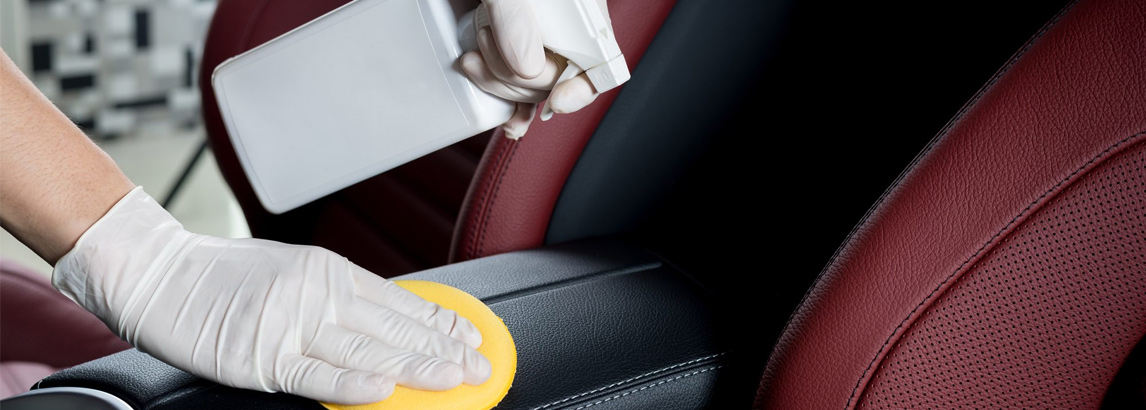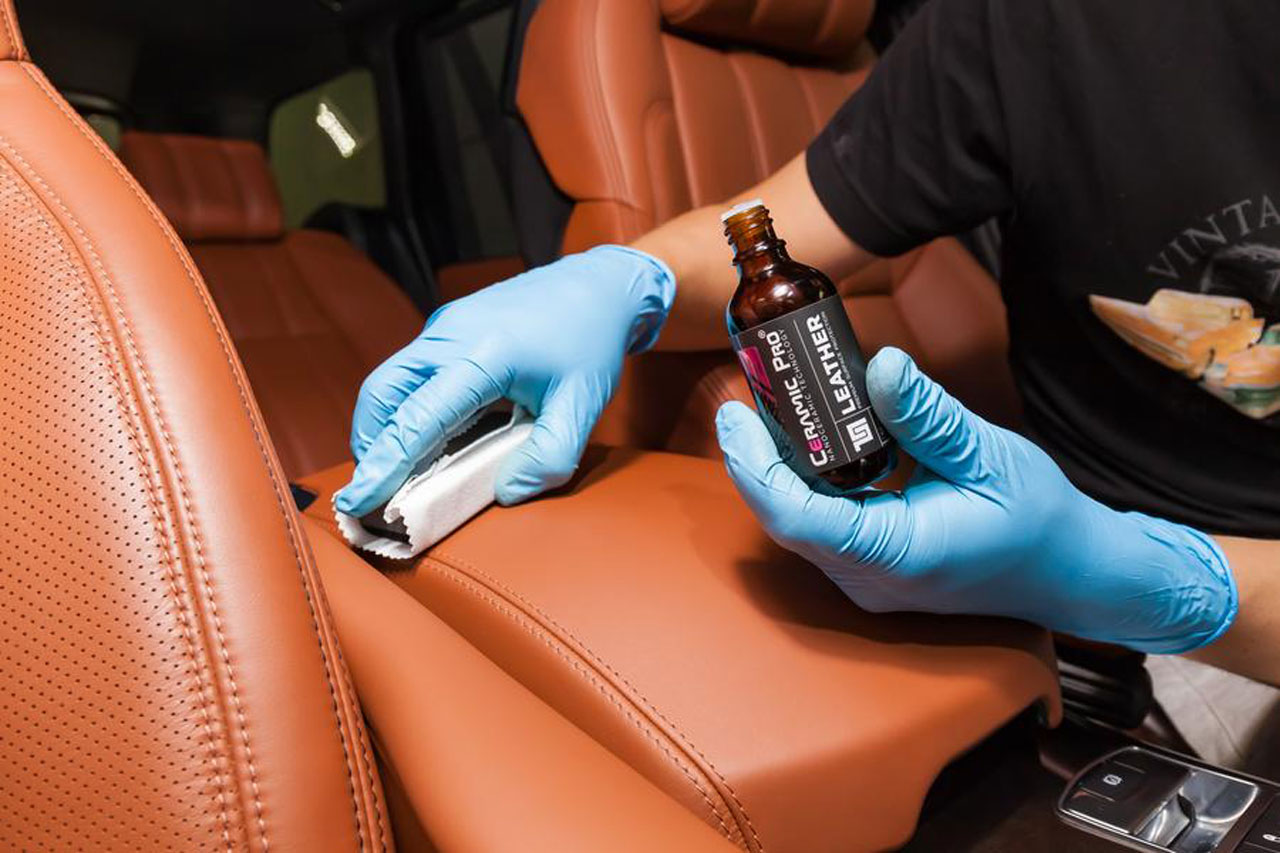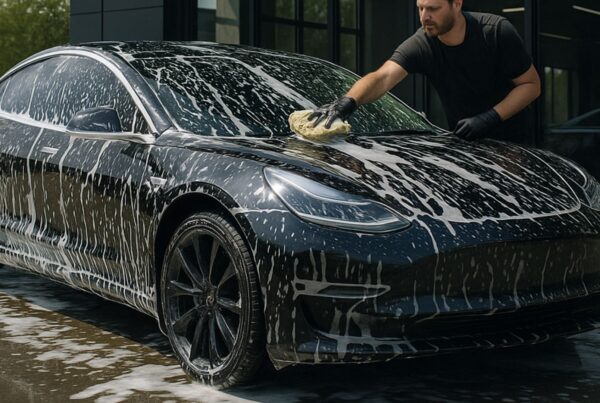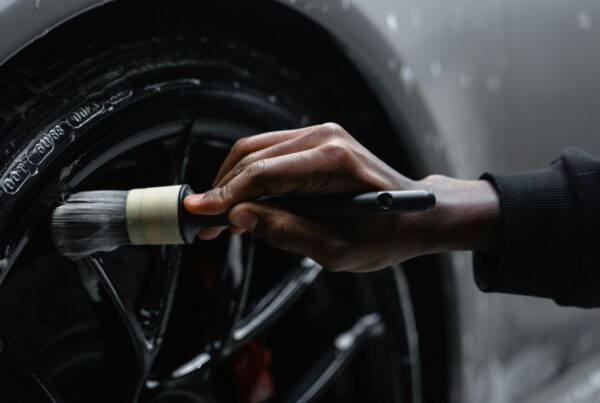We’ve come to the end – and no, I’m not talking about those annoying political ads. Today we are entering the final phase of our Car Detailing 101 education series. In previous episodes, we’ve guided our readers through the entire process that a professional detailer uses to clean, polish, and protect a vehicle’s interior and exterior. Now we’ll focus on tips for how you protect car leather interior materials.
Today’ we’re going to put the cherry on top of the detailing sundae. The last step includes applying a protectant on top of leather surfaces like a car seat, door trim, and consoles. As you’ll see in the video, Adam Cote will show you the process of applying traditional leather conditioners and dressings. He’ll also explain why a leather seat of today is much different than in years past – and why modern and older vehicles can benefit from interior ceramic coatings, which serves as the ultimate seat protector.
So – take a few minutes to watch this video by Adam Cote, then proceed to read the steps and extra details below. If you’d like to catch up – and review our entire Car Detailing 101 series – click this link.
What Options Are Available for Protecting Leather Surfaces
Those of us who are old-school car guys swear by leather conditioners and dressings. But what is different about these two products?
A leather conditioner is intended to maintain hydration in a leather car seat and other interior parts. The conditioner soaks into the top layer of the hyde, which helps to reduce the potential of drying, cracking, and other damage caused by UV rays and excessive heat.
A leather dressing is applied to help protect the surface against exposure to UVA and UVB. Consider a leather dressing similar with sunscreen for your skin. However, it’s also used to help improve the shine of the leather surface.
These are the two big dogs in leather protection. There are also specific leather cleaner products, but we covered that in a previous episode of Car Detailing 1010. They were initially created to work with traditional leather upholstery materials.
But then something happened in the automotive industry – cost cutting. The manufacturers were realizing that genuine leather became cost-prohibitive. This led to the creation of leatherette and synthetic leather used to create an upgraded vehicle seat. It also saw a large addition of perforated leather seats.
These materials are painted then coated with a urethane coating – like a clear coat for paint. Even genuine leather today in luxury vehicles receives this similar factory-applied treatment. We’ll dive into this new process and the professional-grade interior nano coatings that provide superior protection for leather surfaces.
Looking For a Superior Coating for Leather Interiors? Get a FREE Estimate for Ceramic Pro Leather Coatings NOW!
Steps for Using Leather Conditioner and Dressings
If you’re a fan of hard work, using a leather conditioner and dressing is the way to go. Let me be clear – there is nothing wrong with this type of leather treatment – it’s just more time and labor-intensive vs using a professional leather nano ceramic coating. Having a professional detailer install a high-quality window tint for cars is a great way to avoid leather damage. But again – we’ll get to that soon.
Step 1 – Gather Your Supplies
To treat your vehicle’s interior pieces that are leather, you’ll need to collect the following:
- A high-quality leather conditioner
- A high-quality leather dressing
- Multiple microfiber towels
- A microfiber applicator pad
Step 2 – Consider These Leather Treatment Tips
Applying leather conditioners and dressings is a tricky process. It’s important to only apply these substances directly on leather materials. As such, there are a few tips we’ve gathered – that will help you avoid cross contamination or other issues.

In previous editions of Car Detailing 101 – we provided many tips for cleaning interior materials – including leather. Spraying cleaners on the surface is OK. But, when you detail or treat them, it’s best to hand apply with a microfiber applicator.
First – Always Apply Liquids to Microfiber – Then Apply to Surface
A major mistake some inexperienced detailers make is spraying leather dressings directly on the surface. This results in having the substance stick to cloth, plastics, or worse – glass. Leather conditioners and dressings are comprised of many oils – which are extremely difficult to remove from materials not designed for their application.
Second – Use a Microfiber Applicator Pad
In the video, Adam explains why it’s a good idea to use a microfiber applicator block or pad. While he uses it with the dressing, it’s just as wise to use it with a conditioner. The key is to use two separate applicator pads – one for the dressing, and another for the conditioner. This will avoid cross contamination when treating leather seats.
Third – Apply – Then Buff Off
The final tip for using leather treatment products is knowing the process. It pretty much breaks down as such:
- Apply the liquid product on the applicator pad, microfiber cloth, or microfiber towel. Follow the instructions for the specific product used to determine how much to use.
- Spread the product evenly across the leather surfaces – again – making sure not to spread on other materials.
- Buff the liquid conditioner off with a clean microfiber towel. It’s a good idea to use a high-fiber count microfiber towel – or one that is plush for the removal step.
Skip the Stress & Choose Ceramic Pro Interior Coatings
We address the elephant in the leather treatment room earlier. The simple truth is that your expensive leather interior is closer to Rich Corinthian Leather than pure leather seats (bonus points if you got that reference). Its factory treated with a clear coat – which provides added protection and maintains the comfort of leather.
To provide further protection, Ceramic Pro developed a customized line of leather nano ceramic coatings. Our Ceramic Pro 9H Leather interior coatings are specifically formulated for today’s leather surfaces. It bonds directly on top of the surface, increasing the hydrophobic properties, reducing the development and collection of dust and dirt, without negatively reducing comfort.
Ceramic Pro interior nanoceramic coatings are customized for specific substrates – including glass, textiles, plastics, and leather. This provides a customized level of protection which not only reduces damage but is supported with a Carfax documented warranty.
Those opting for the Gold Package can have peace of mind knowing their vehicle’s service history report will document the warranty for the life of the vehicle. Not only is this an exceptional sales tool – but it shows any potential buyer that their investment will be protected for years.
If you’d like to learn more about leather interior treatment solutions – or receive a free estimate for protecting the interior of your car, truck, SUV, or fleet vehicles, click the button directly below.







